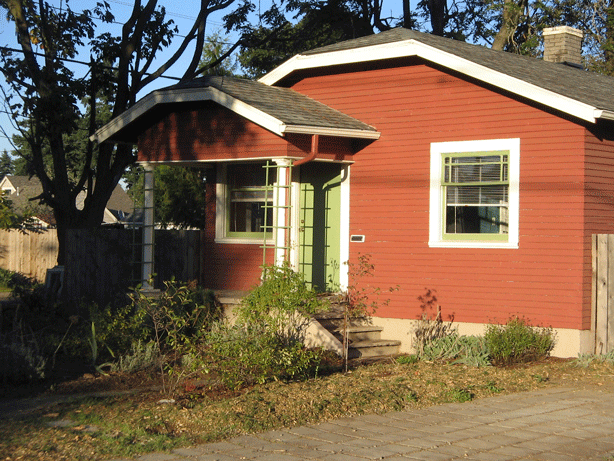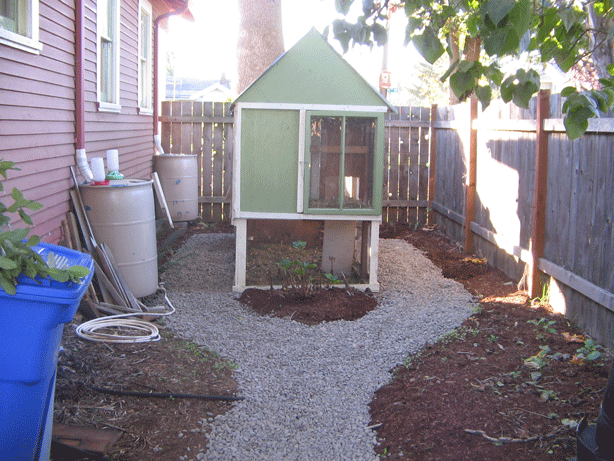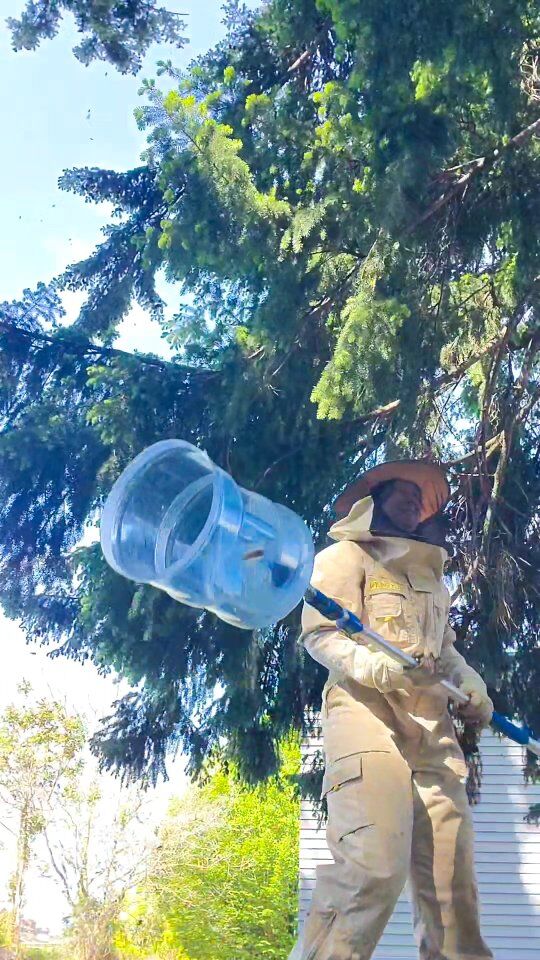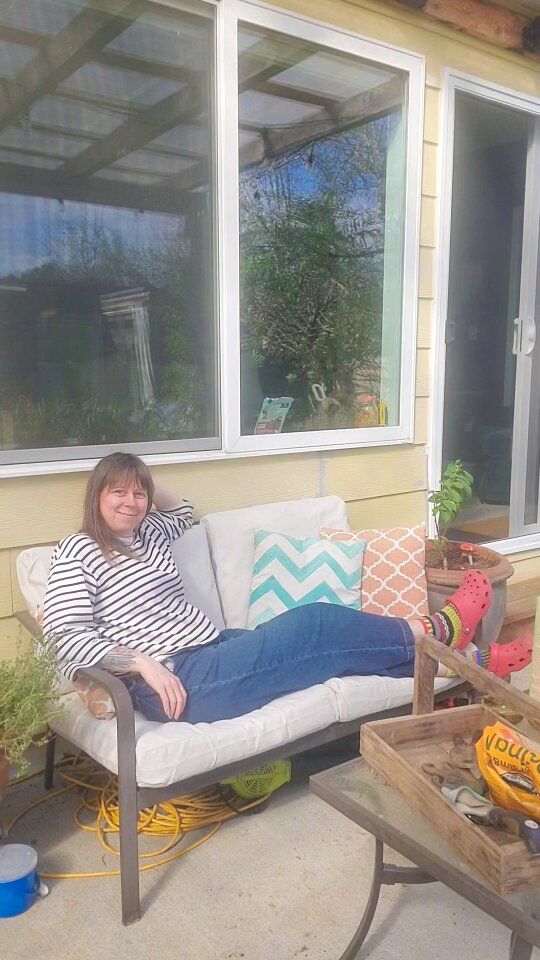When we say we’re “going home”, we still think of that house as our home. The house smells like our house. We remember how the paint colors inside change depending on the light of the day. The backyard holds memories of garden parties, picking currants for morning pancakes, and watching the chickens roam around the patio while we sip coffee.
The garden there has been an evolution. First it was grass, then came fruit trees, then raised beds, then berry bushes, and still more. There are more things I want to plant, but I am holding off until we move back in to care for them in those delicate first few years.
One thing I have wanted to do for a while was create clear, tidy paths though the garden to hold the space together. We recently checked that one off our list and I think it looks pretty awesome. It is far from the most sustainable project we have done back there, so it was a complicated decision.
The most glaring unsustainable choice we made was to line the paths with a weed barrier fabric. We did not choose the somewhat effective natural burlap – we choose the 30-year polyester fabric. I have concerns about whether it will even biodegrade after that time. But we don’t use pesticides or herbicides, so the trade off is reduced weeding, saving time and energy.
The next unsustainable aspect of our paths is the small river rock we ordered from Mt Scott Fuel to line the paths, on top of the weed barrier. Often we order things like rock, gravel, sand, etc and never give a thought to where it came from. But most likely a riparian area was disturbed because I wanted that rock. Salmon have fewer rocky areas to lay eggs – that kind of thing.
Sustainability is never really so simply black and white. But those paths look pretty spectacular if I do say so myself.







 This cluster was about the siz
This cluster was about the siz




 I start with a
I start with a



Sustainability is hard work, I agree. I guess that’s why main stream gardeners have’nt taken the plunge. Still, I think if you’re generally applying the principles you’re on the right path. The thing I get caught with alot is our watering systems. In Australia we need a system, and it’s generally going to be polypipe based. I dont know much about how that’s made but it lasts forever even in our tough conditions…. Cant seem to think how to get out of that one?? Thanks for sharing your reflections on this – ps. the paths do bring it all together nicely.
I am designing my NE Portland backyard now and this blog has been amazingly helpful so thank you. My 4X8X16″ planter is hopefully arriving this week. Are there more sustainable types of gravel, or is gravel in general a poor choice sustainability wise?
Gravel is not the most unsustainable thing on the planet, but it usually either comes from mining it in the river (thus taking away spawning grounds for fish) or digging into the side of a mountain (thus messing with bird and other wildlife habitat). I think crushed gravel might be better than river rock, but either way it’s coming from somewhere. I think it’s pretty hard to be completely 100% sustainable with our choices. The house I’m typing away from is certainly built on foundation that uses gravel, same with the roads we drive on, and it goes on and on